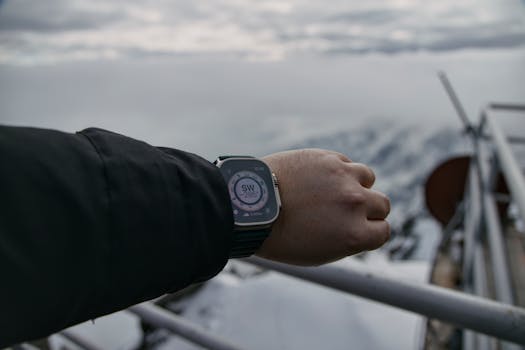
“
Navigating Privacy in 2026: The Ethical Landscape of Wearable Tech
Wearable tech, including smartwatches, fitness trackers, and other devices, has become increasingly popular in recent years. However, as these devices collect more and more personal data, concerns about privacy and ethics are growing. Wearable tech is no longer just a luxury, but a necessity for many, and it’s essential to understand the implications of using these devices on our personal lives.
Introduction to Wearable Tech and Privacy

Wearable tech devices are designed to track various aspects of our lives, from physical activity and sleep patterns to heart rate and location. While this data can be useful for improving our health and fitness, it also raises significant privacy concerns. Privacy is a fundamental human right, and it’s essential to ensure that our personal data is protected from unauthorized access or misuse. For more on this topic, check out our article on Wearable Tech and Mental Health.
The Ethical Landscape of Wearable Tech

The ethical landscape of wearable tech is complex and multifaceted. On one hand, these devices have the potential to improve our lives and provide valuable insights into our health and behavior. On the other hand, they also pose significant risks to our privacy and security. Ethics play a crucial role in ensuring that wearable tech devices are designed and used in a responsible and ethical manner. For insights on new trends, see our post on Fashion Meets Function.
Navigating Privacy in 2026

So, how can we navigate privacy in 2026 and ensure that our personal data is protected? Here are some tips:
- Read the terms and conditions: Before using a wearable tech device, make sure you understand the terms and conditions of use, including how your data will be collected, stored, and used.
- Use strong passwords: Use strong, unique passwords for all your devices and accounts, and avoid using the same password for multiple accounts.
- Enable two-factor authentication: Enable two-factor authentication (2FA) whenever possible to add an extra layer of security to your accounts.
- Be mindful of permissions: Be mindful of the permissions you grant to wearable tech devices and apps, and only grant access to the data that is necessary for the device or app to function.
- Use a VPN: Use a virtual private network (VPN) to encrypt your internet traffic and protect your data from unauthorized access.
Conclusion

In conclusion, wearable tech devices have the potential to improve our lives, but they also pose significant risks to our privacy and security. By understanding the ethical landscape of wearable tech and taking steps to protect our personal data, we can navigate privacy in 2026 and ensure that our rights are respected.




